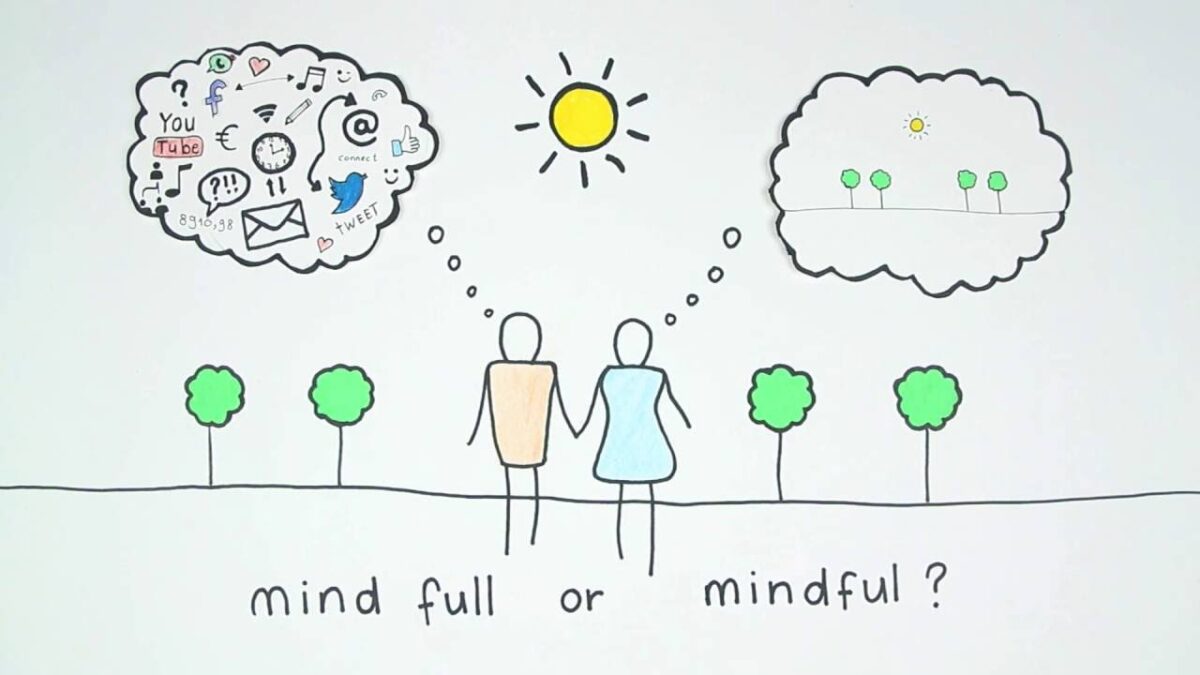Mind Full or Mindful?
laura on 12/12/2021

No doubt you, as a therapist or client will at some point in the process be introduced to the principles of Mindfulness. Mindfulness is the basic human ability to be fully present, aware of where we are and what we’re doing, and not overly reactive or overwhelmed by what’s going on around us. It is an integral part of some forms of therapy such as Mindfulness based Cognitive Behavioural therapy and Dialectical Behaviour therapy. Mindfulness can provide strategies to manage challenging thoughts and emotions through a focus on the here and now.
Mindfulness can act as a grounding approach to settle ourselves when we’re feeling overwhelmed. If you find yourself stuck with a strong emotion, this approach can help you to feel anchored in the present and restore balance in your body and mind. Grounding skills are helpful to build sensory and cognitive awareness which can also help in therapy as you begin to recognise patterns and trends that either help or hinder you in your goals.
Connecting to nature can be a key part of developing mindful and grounding activities. Nature has the power to reconnect us to ourselves, our present, and our memories, through our senses. Indeed, as Lao Tzu, the Chinese Philosopher from 500 BCE said, ‘Nature does not hurry, yet everything is accomplished’. There is stillness and motion, acceptance and change, all happening under our feet and above our heads.
There are many ways of connecting to nature, but here are a few ideas to get you started.
Forest Bathing
We know from our own experiences that when we are surrounded by trees and their canopies, we can feel calmed, and the scents of the earth and leaves and bark can stimulate our senses in a way that encourages relaxation and reconnection with ourselves and nature.
The Japanese practice of Shinrin-Yoku, translated as ‘forest bathing’, recognises the healing power of forests which provide sensory stimulus to decompresses our nervous system, allowing us to reset and recharge. Originating in the 1980s in Japan it has become a key preventative element of Japanese medicine, with 44 accredited Shinrin-Yoku forests across the country. Internationally this practice is also called ‘Forest Therapy’.
You don’t need to live close to a forest to benefit from forest bathing. A local park with trees will also provide opportunities for wellbeing. As forest bathing is gaining in popularity in Australia there are many choices of accessing in-person or online forest bathing sessions. The Royal Botanic Gardens in Melbourne offers two- or three-hour sessions involving time spent in key gardens and with certain trees, concluding with a shared tea ceremony. for more details: rbg.vic.gov.au
Other ways to connect with Forest Therapy is through individual trained practitioners such as forestwalks.com.au and threelittlebirdsnaturetherapy.com.au where in person and online events occur. You can learn more about this developing health sector here: https://infta.net
If you prefer to go solo with nature, here are some suggestions:
- Find a favourite tree spot from your favourite nature place
- Take a chair or blanket and stay a while.
- Bring a notebook, or sketch pad.
- Observe how you feel there. Be with yourself and the natural world.
Water
Similarly, the atmosphere of forests, bodies of water can evoke a sense of calm and tranquillity in us. Watching water or being close to this ‘blue space’ can be meditative. It allows us to connect to the vastness of the ocean landscape, or the intimacy of a flowing river with all of its living lifeforms, bringing us greater calm and connection. Marine Biologist, Wallace J. Nichols, writes about in his book, Blue Mind. Connection to water comes in many different forms from the beach and ocean, or the local creek or river, to a swimming pool or floatation tank. If we are water observers, we can benefit for the connection to it with a walk alongside our chosen blue space. If we prefer to be emersed and receive benefit that way, regular swims at our local pool or beach, spas at a bathhouse (senseofself.com) or natural springs (peninsulahotsprings.com) can support our wellbeing. A more immersive water experience can be found in a floatation tank. Floatation tanks are pods filled with warm salt water and hour-long sessions emersed in them alone can include music and different lightening effects, or quiet darkness. There are many centres around the city, and across the country offering this service and you can learn more here: floattherapy.org.au
Whichever nature path you choose to take, connecting to the earth can support our mental health in many ways.
This blog was written by Ian Clark – Psychologist YMM, and his partner in crime, Rachel Clark
Ian enjoys working with adolescents and adults presenting with a range of difficulties, including mood disorders, anxiety, stress related to school or work, and has years of experience supporting victims of domestic violence. Ian believes it is essential to the therapeutic process to provide a welcoming, safe, and non-judgemental environment in which to carefully explore ways to help people to make positive changes in their lives. He works with clients dealing with a variety of issues and is committed to providing individualised support to each client. To learn more about Ian, check out the “Our Team” page on our website! https://yourmindmatters.net.au/our-team/
Rachel is a passionate educator and community organiser who works to enhance people’s engagement with their own communities. She has 25 years of experience in the fields of teaching, cultural diversity, disability, and social justice organisational and volunteer management to support students, teachers, social and youth workers, volunteers, and organisations to develop critical, ethical and creative thinking capabilities that lead to action.
- Category: Self care, Stress management
